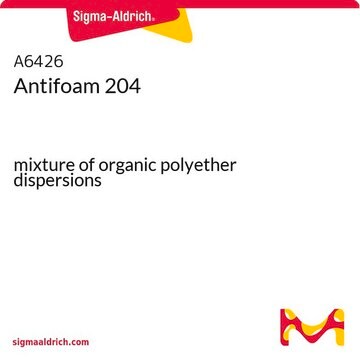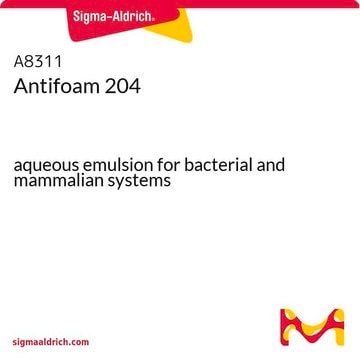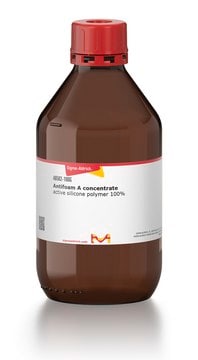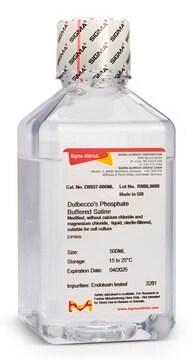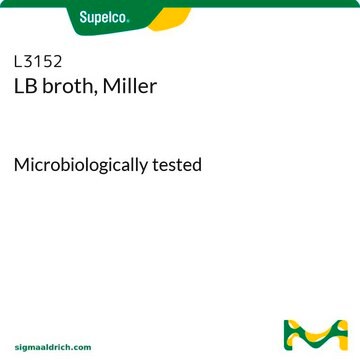A5757
Antifoam B Emulsion
aqueous-silicone emulsion
Sinónimos:
Antifoaming agent B
Iniciar sesiónpara Ver la Fijación de precios por contrato y de la organización
About This Item
Código UNSPSC:
12161900
NACRES:
NA.25
Productos recomendados
Formulario
emulsion
contiene
emulsifier (different from those present in Antifoam A emulsion)
técnicas
cell culture | hybridoma: suitable
microbiological culture: suitable
Descripción general
Antifoam eliminates excessive foaming formed during impingement, due to proteins and/or carbohydrates in the collection medium. Antifoam B emulsion is a silicone based antifoam. Antifoam B emulsion does not affect the growth of bacteria. Antifoam B emulsion functions as an antifoaming agent in shake flask culture of bacteria.
Aplicación
Antifoam B emulsion has been used:
- to enhance collection efficiency in collection media
- as a component in stress granule lysis buffer to reduce foaming, in host cell lysis buffer to reduce foaming caused by detergents
- to improve solubility of antibiotics
- as a foaming controls in bacterial growth media
Otras notas
A 10% aqueous emulsion of polydimethylsiloxane
Código de clase de almacenamiento
10 - Combustible liquids
Clase de riesgo para el agua (WGK)
WGK 3
Punto de inflamabilidad (°F)
>214.0 °F - closed cup
Punto de inflamabilidad (°C)
> 101.1 °C - closed cup
Elija entre una de las versiones más recientes:
¿Ya tiene este producto?
Encuentre la documentación para los productos que ha comprado recientemente en la Biblioteca de documentos.
Los clientes también vieron
Separation of metabolic supply and demand: aerobic glycolysis as a normal physiological response to fluctuating energetic demands in the membrane
Epstein T, et al.
Cancer & Metabolism, 2(1), 7-7 (2014)
High-Throughput Quantification of Bacterial-Cell Interactions Using Virtual Colony Counts
Hoffmann S, et al.
Frontiers in Cellular and Infection Microbiology, 8, 43-43 (2018)
Fermentation pH modulates the size distributions and functional properties of Gluconobacter albidus TMW 2.1191 levan
Ua-Arak T, et al.
Frontiers in Microbiology, 8, 807-807 (2017)
Isolation of yeast and mammalian stress granule cores
Wheeler JR, et al.
Methods, 126, 12-17 (2017)
Celeste J Brown et al.
PloS one, 8(3), e60401-e60401 (2013-03-28)
Observing organisms that evolve in response to strong selection over very short time scales allows the determination of the molecular mechanisms underlying adaptation. Although dissecting these molecular mechanisms is expensive and time-consuming, general patterns can be detected from repeated experiments
Nuestro equipo de científicos tiene experiencia en todas las áreas de investigación: Ciencias de la vida, Ciencia de los materiales, Síntesis química, Cromatografía, Analítica y muchas otras.
Póngase en contacto con el Servicio técnico
